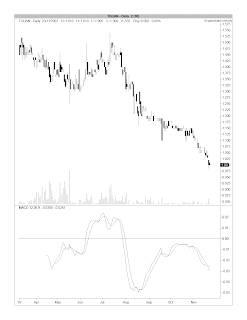On November 27, MEMS announced that it was not able to issue its Audited Financial Statements by 30 November 2007, as the “external auditors have expressed concerns over certain transactions relating to revenue and property plant and equipment… the Board has resolved not to recognize revenue of RM19.72 million. As a result of this, the unaudited consolidated revenue for the financial year ended 31 July 2007 will be revised to RM53.7 million. This will consequently result in the unaudited profit after tax for the financial year ended 31 July 2007 to be reduced from RM21.47 million as announced on 27 September 2007, to RM13.45 million.” A special committee has been set up to look into this matter.
Before this announcement, the market was relying on MEMS' unaudited 4th quarter financial statement to assess the company's financial performance & position. Based on that statement, MEMS' net profit for FYE31/7/2007 has increased by 54% from RM14.0 million to RM21.5 million on the back of a 46%-increase in turnover from RM50.2 million to RM73.4 million. Now, this has to be revised down.
Based on the adjustment announced, it seems that MEMS' net profit for FYE31/7/2007 has actually declined by 3.7% (instead of a gain of 54%) while its turnover has only inched up by 7.0% (instead of 46%), when compared to the previous year's results. MEMS' EPS for FYE31/7/2007 will be lowered to 2.05 sen while its NTA per share would probably be adjusted from RM0.187 to RM0.175.

Chart: MEMS' weekly chart as at November 29 (courtesy of Quickcharts)
Since the announcement on November 27, MEMS share price has dropped by 46% from RM0.36 (at the close of November 27) to RM0.195 (at the close of November 29). This may appear to be disproportionate to the seriousness of the matter in hand. Here, we need to consider the following:
- Why were these "sales" booked in the accounts earlier?
- Are there any further accounting adjustment of a negative nature?
- What are the reasons for the slow growth in MEMS' turnover given that its products were reportedly cheaper than its competitors?
- Are the existing shareholders (such as Legg Mason) willing to overlook this serious accounting problem?
With the above questions still unanswered, I believe that it is too early to make any call on MEMS.













































